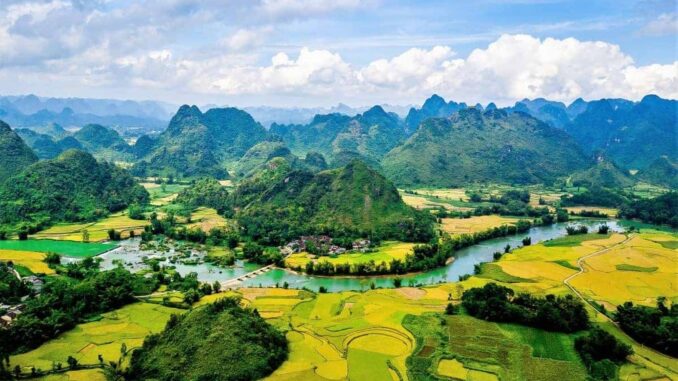
Non Nuoc Cao Bang Geopark has an area of more than 3,275 km2 (accounting for nearly half of the area of Cao Bang province), including 6 districts of Ha Quang, Tra Linh, Quang Uyen, Trung Khanh, Ha Lang, Phuc Hoa, and a part of the area of three districts: Hoa An, Nguyen Binh, and Thach An. This is a place that demonstrates the complex geological development history lasting more than 500 million years in this land. This place has many famous landscapes and historical and cultural relics which is distinguished by many domestic and international travelers.
This is the shelves of 8 ethnic groups such as Tay, Nung, H’Mong, Kinh, Dao, San Chay (Shan Chi), Hoa, and Lo Lo. This place is also considered one of the earliest places inhabited by prehistoric people in Vietnam and is the cradle of the Vietnamese revolution during the resistance war against the French colonialists. It is also a land of tangible and intangible cultural heritage sites and special historical monuments. The area is also well-known for its high biological diversity with abundant endemic plant and animal species and ecosystems.
Unique feature
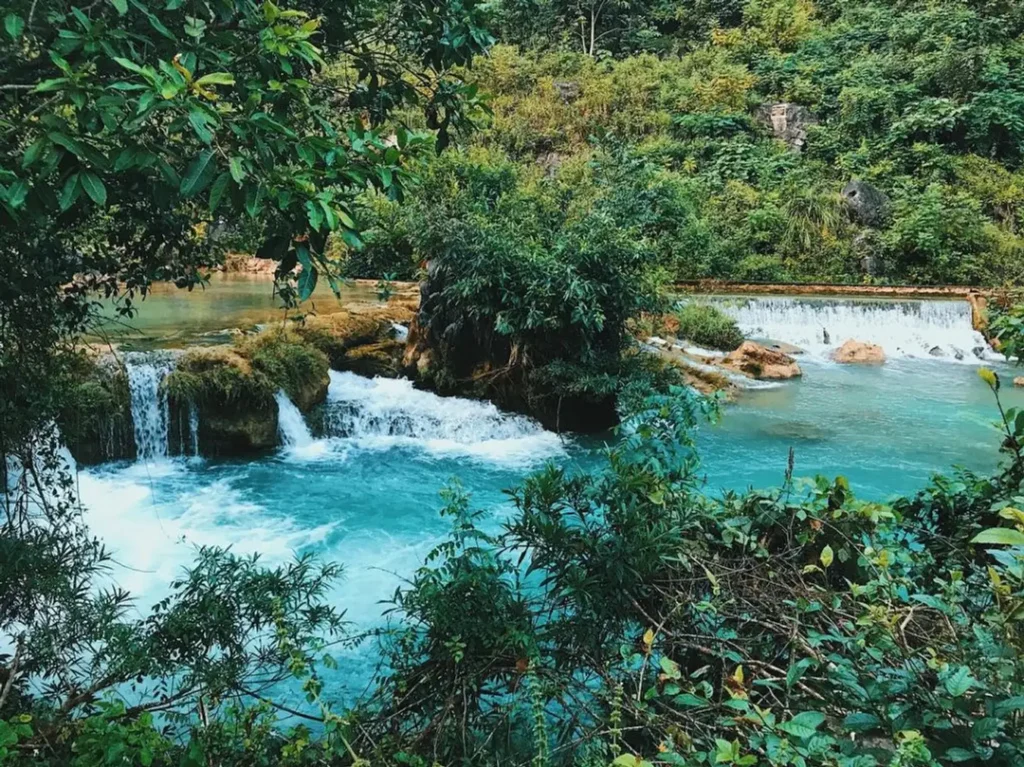
This is a rare land in Vietnam where visitors can learn about the history of the earth through traces. Fossils, marine sediments, volcanic rocks, minerals…, especially limestone landscapes, are wonderful testaments to the evolution and change of the earth.
Nowadays, scientists have discovered, evaluated, and proposed ranking over 130 unique geological heritage sites basely on rich and diverse terrain types and limestone landscapes such as stone towers, cones, valleys, caves, river and lake systems, and underground caves.
They reflect a complete cycle of karst evolution in the tropical region of northern Vietnam. In addition, there are many other types of geological heritage such as paleontological fossils, boundaries between geological units, faults, and types of minerals formed in this land.
Non Nuoc Cao Bang is also famous for its biodiversity values with many ecosystems, endemic plant, and animal species, and many species listed in the Vietnam Red Book.
Special relics
This land has a rich culture and history with more than 215 ranked cultural and historical relics, including 3 special national relics
– Pac Bo – Special National Monuments Area where President Ho Chi Minh returned in 1941 to lead the Vietnamese revolutionary movement after more than 30 years of traveling abroad.
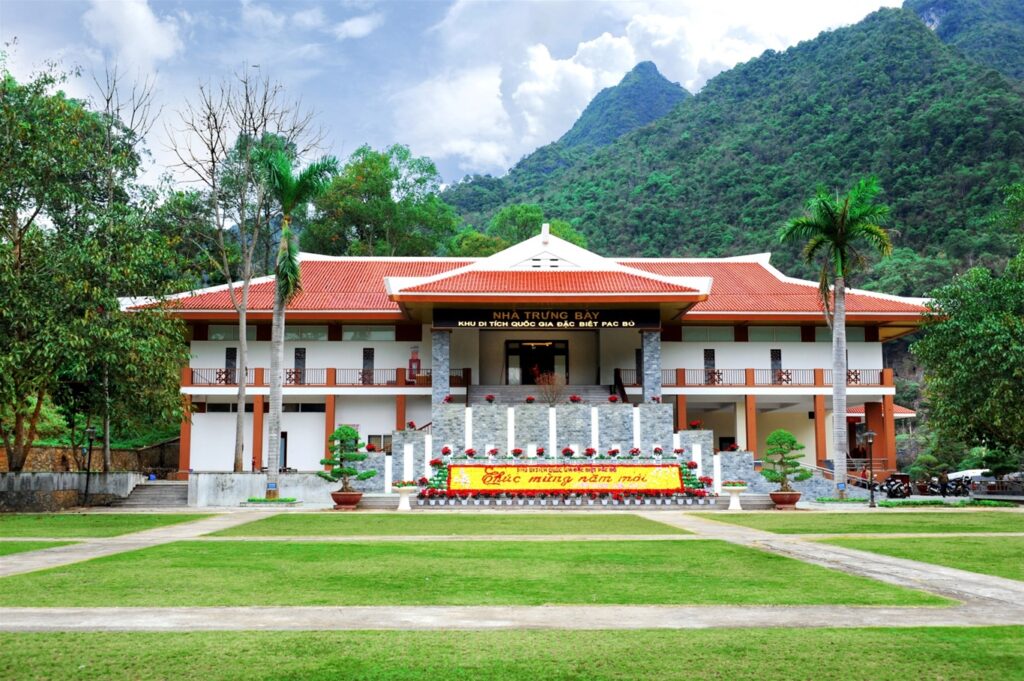
– Tran Hung Dao Forest Special National Relic Area – where in 1944 General Vo Nguyen Giap founded the Vietnam Liberation Army Propaganda Team, the predecessor of today’s Vietnam People’s Army.
– Special National Monument Site of the 1950 Border Victory.
Some tourist destinations
Ban Gioc Waterfall
Ban Gioc Waterfall was once on the list of the most beautiful waterfalls in Southeast Asia and also in the top 4 largest waterfalls in the world. Located at the intersection of the border between China and Vietnam, Ban Gioc is as beautiful as a strip of pure white silk between the mountains and forests of Cao Bang and flows down to the jade-colored Quay Son river.
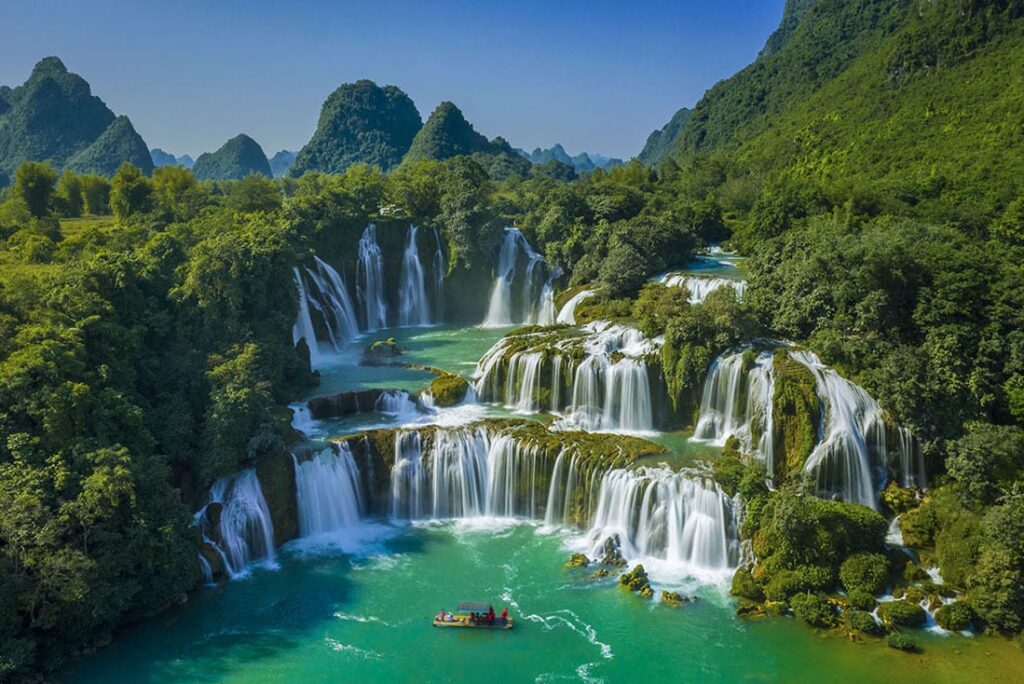
The identifying point of this waterfall is its unique layered structure with each block of water flowing through many layers of limestone and plants. At the foot of the waterfall are the houses and green fields of Nung and Tay ethnic people.
The ideal time to come here is August – November. The period August – September is when Cao Bang is at the end of the rainy season, so the water at the waterfall is abundant and extremely clear. Meanwhile, October is the season of ripe rice and November is when wild sunflowers bloom here.
Ma Phuc Pass
The pass is located in Tra Linh district and has a length of about 3.5 km and an altitude of 700m (compared to sea level). As its name suggests, Ma Phuc Pass is located across a limestone mountain and valley, creating an image similar to a horse. The pass is among the most dangerous roads in Vietnam. Ma Phuc Pass is also classified as a geological heritage of Non Nuoc Cao Bang Global Geopark.
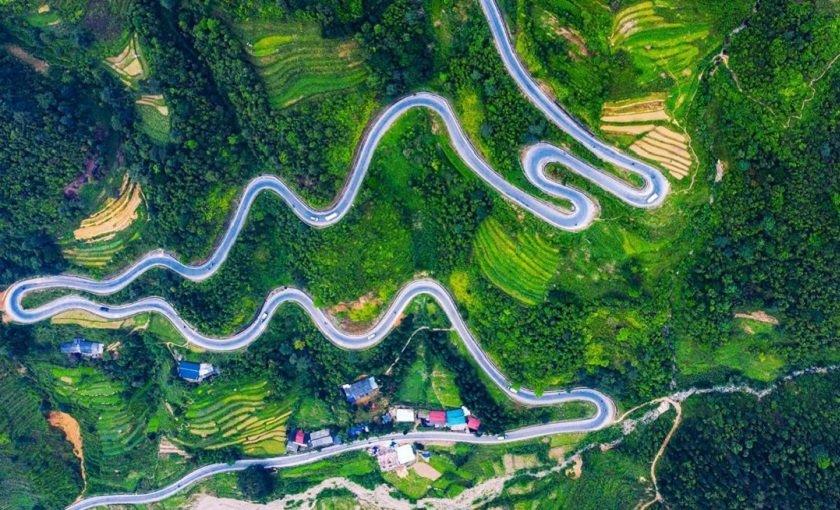
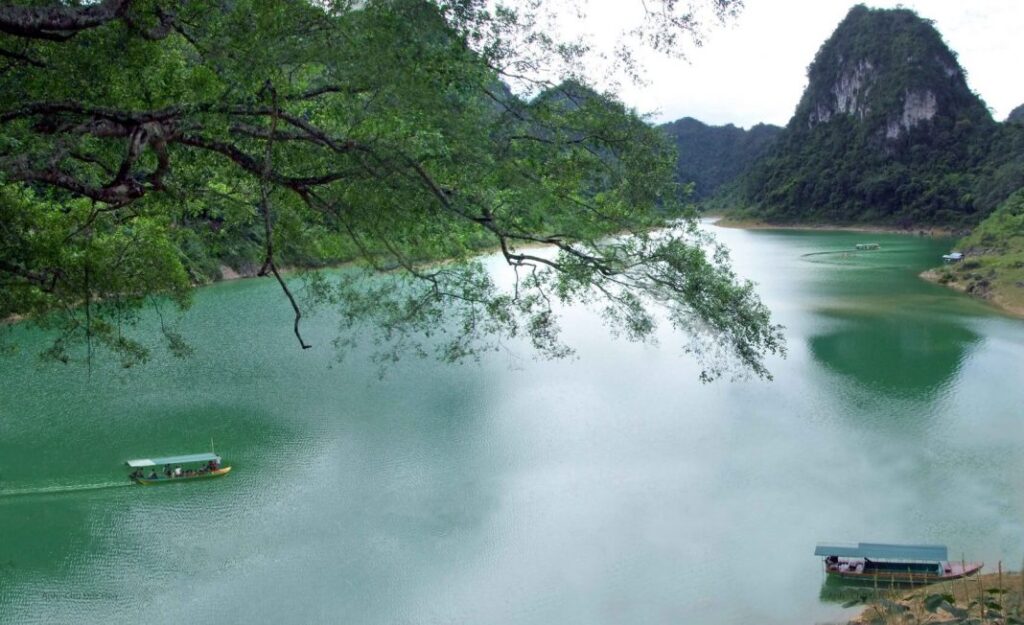
Thang Hen Lake
The lake is located in a complex of 36 natural lakes located at an altitude of nearly 1700m and connected through an underground cave system. This lake has the most beautiful scenery in the North with emerald green water reflecting the clouds and sky. Surrounding the lake are primeval forests and blooming wildflower beds.
Although the lake water will turn turbid during the rainy season, the scene is still as beautiful as a watercolor painting among the Northeast mountains and forest.
Conclusion
On April 12, 2018, UNESCO recognized Non Nuoc Cao Bang Geopark as a Global Geopark. With this recognition, Non Nuoc Cao Bang became the second global Geopark in Vietnam, after Dong Van Karst Plateau of Ha Giang province.
Get an opportunity to visit Global Geopark in Vietnam through Vietnam E-Visa!